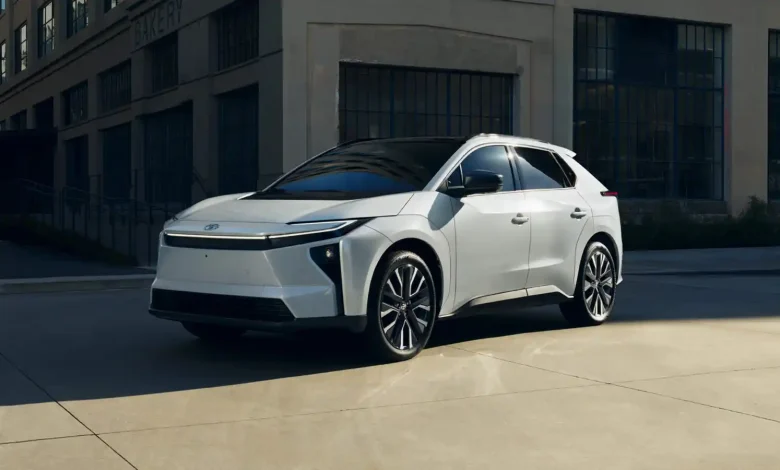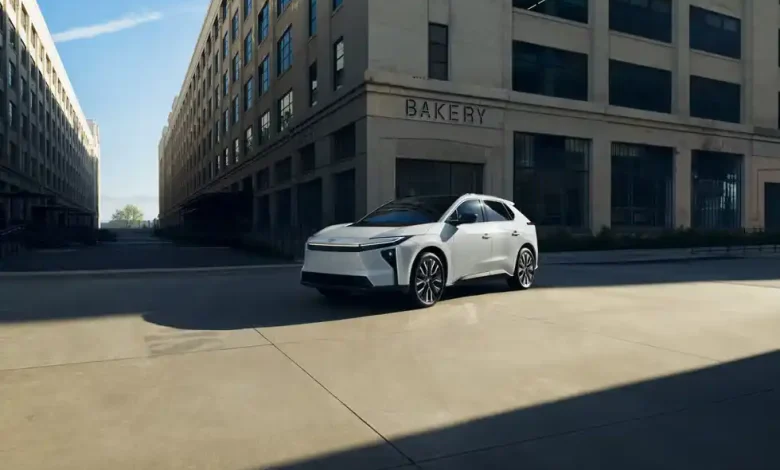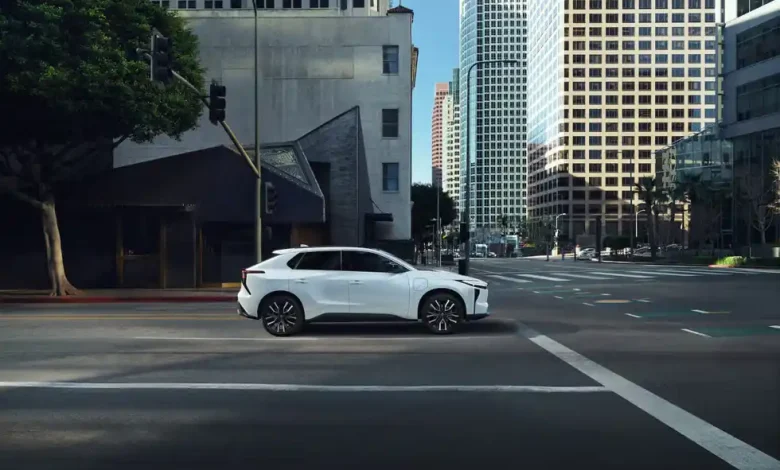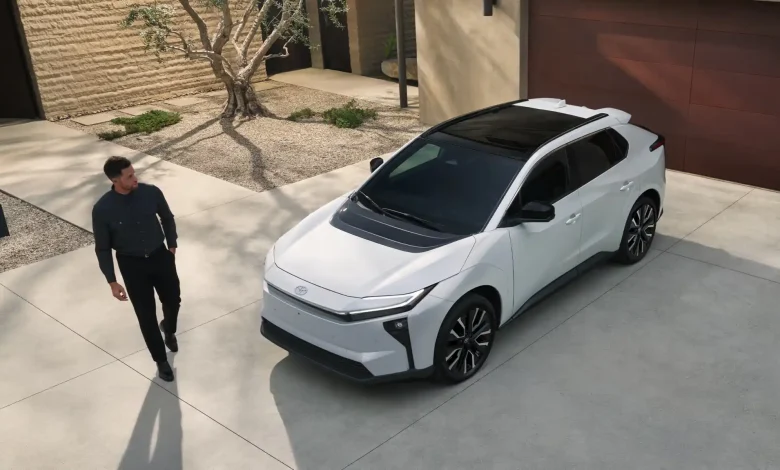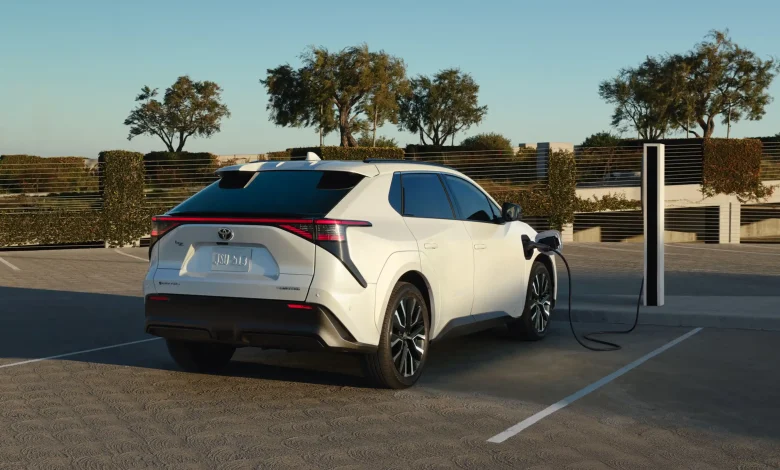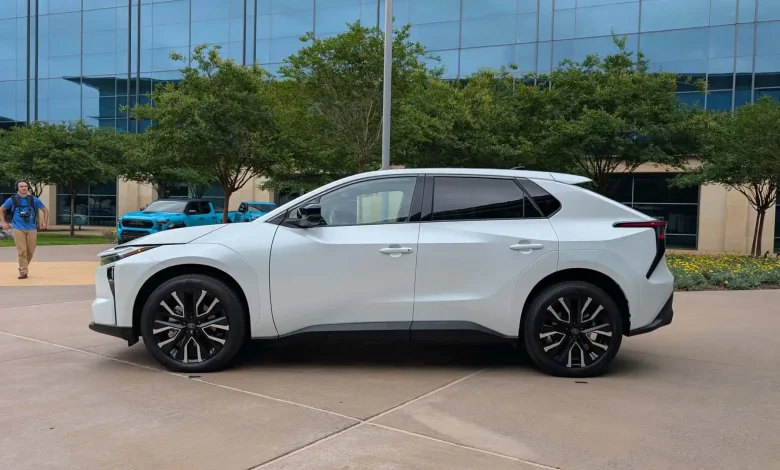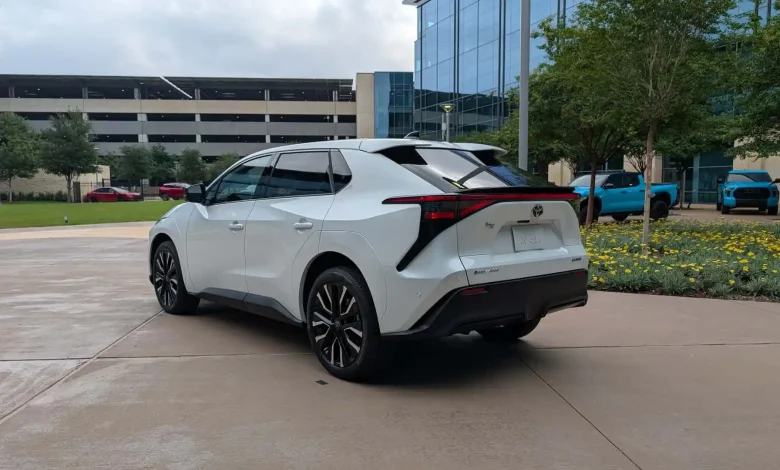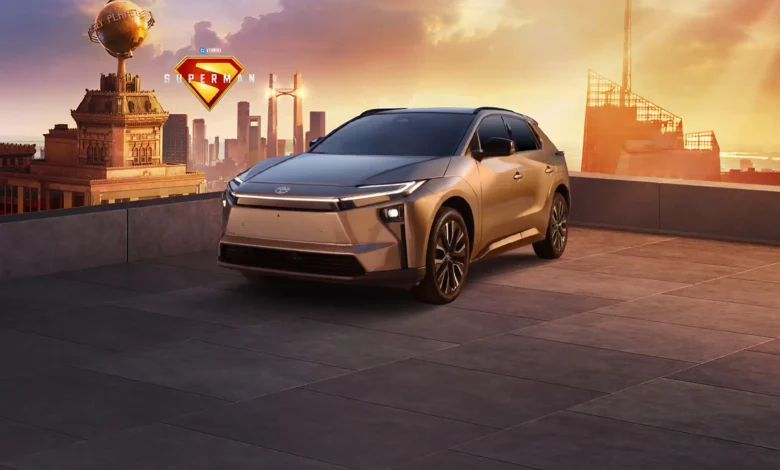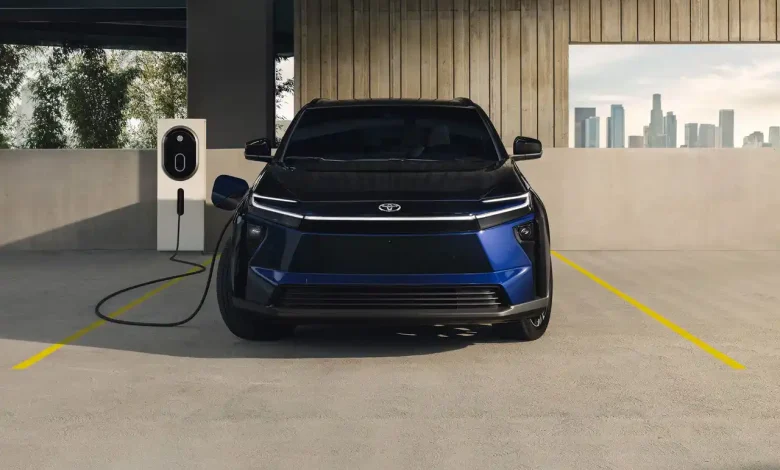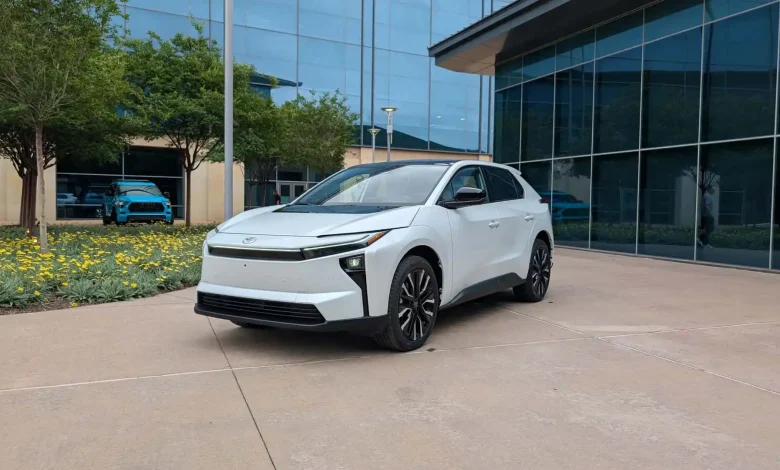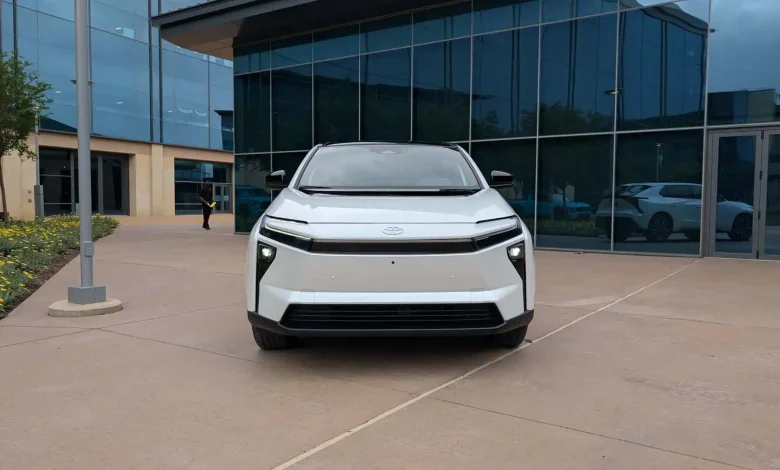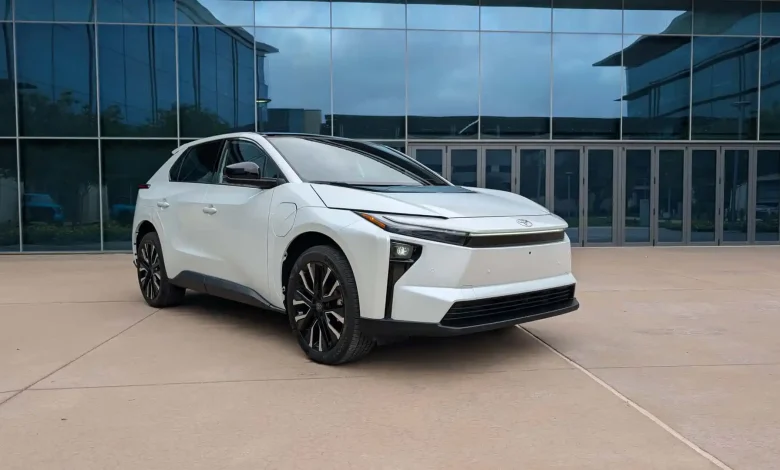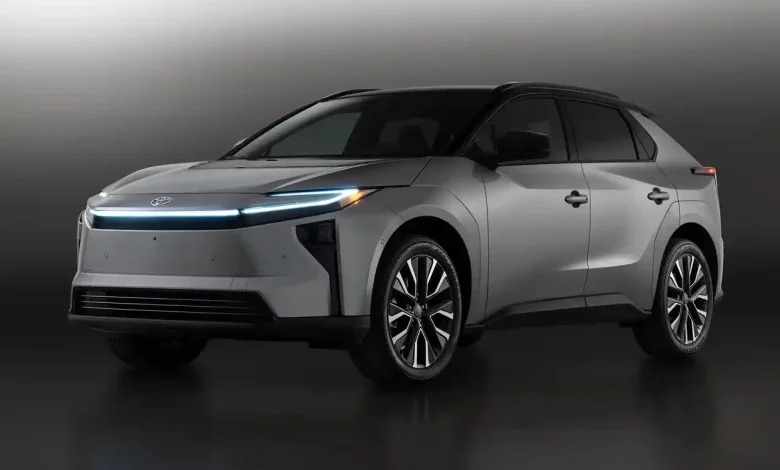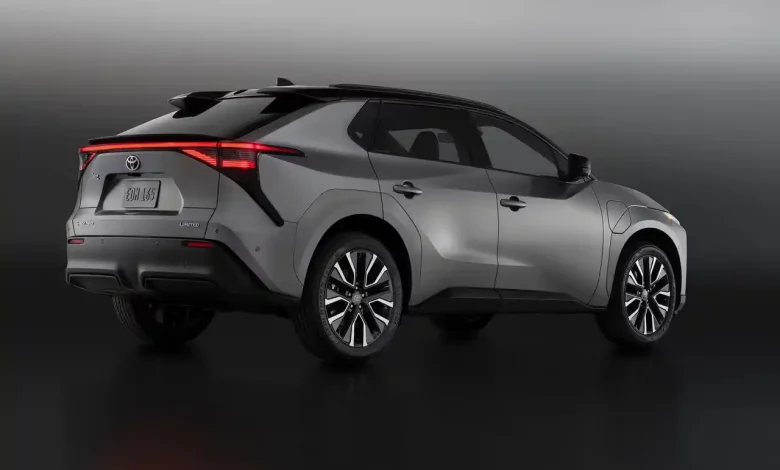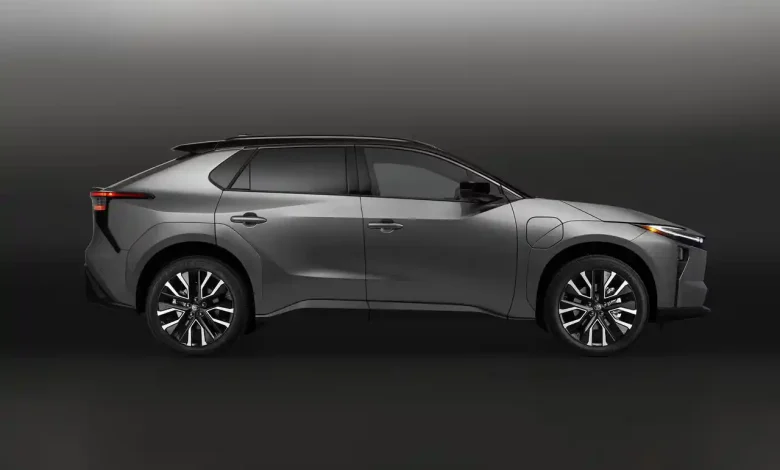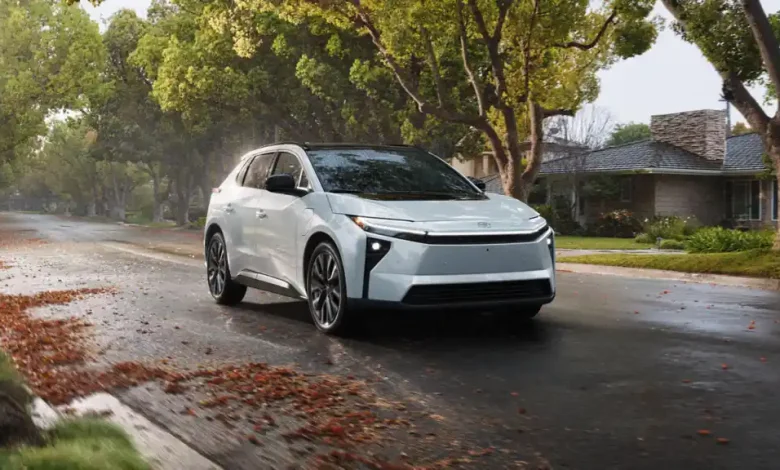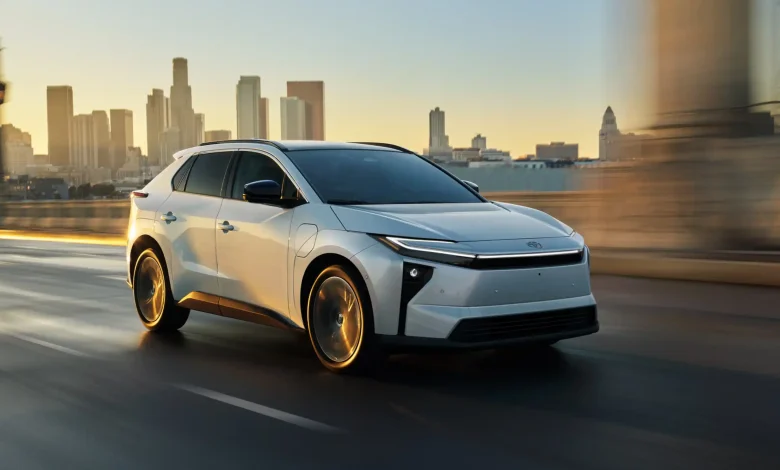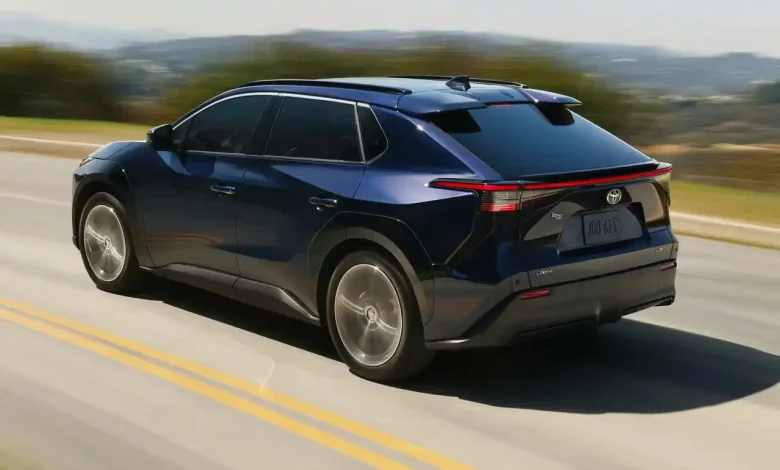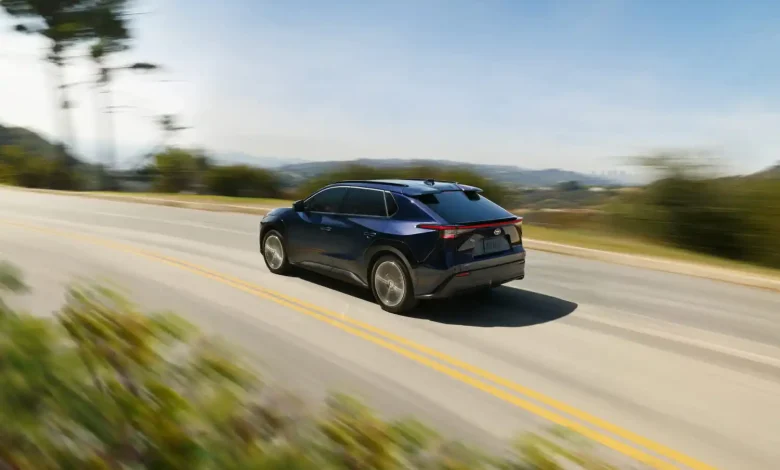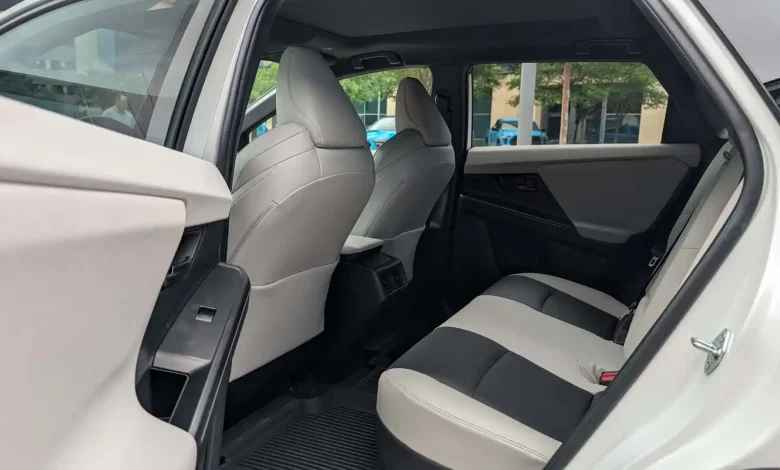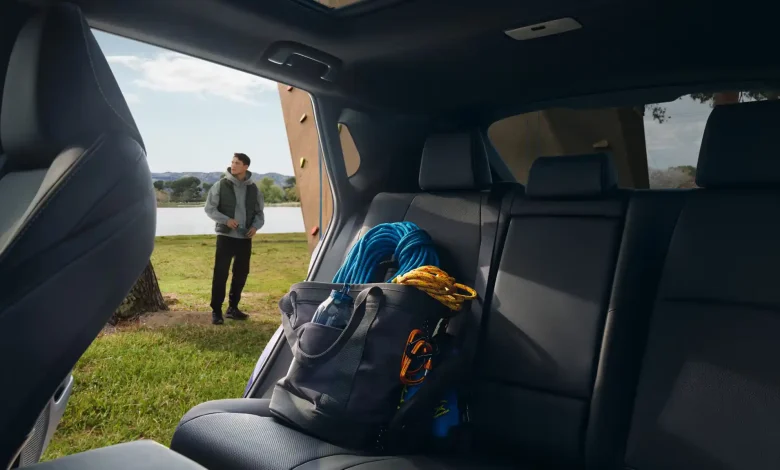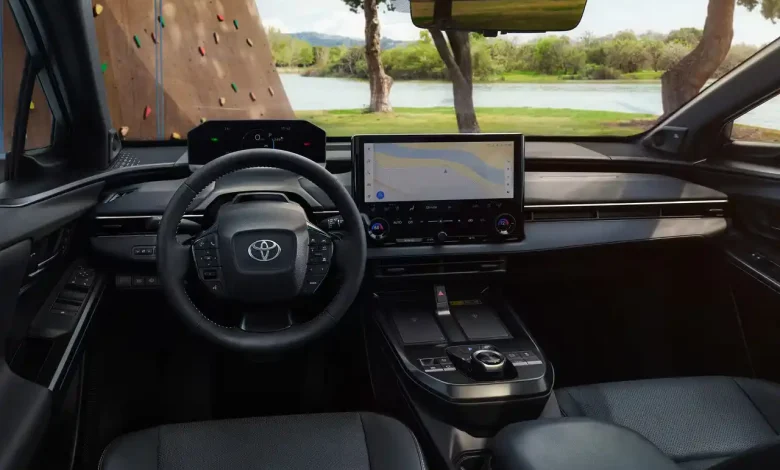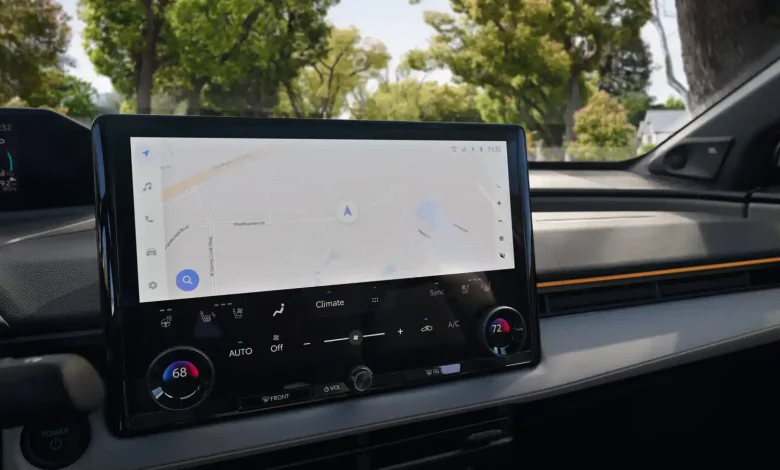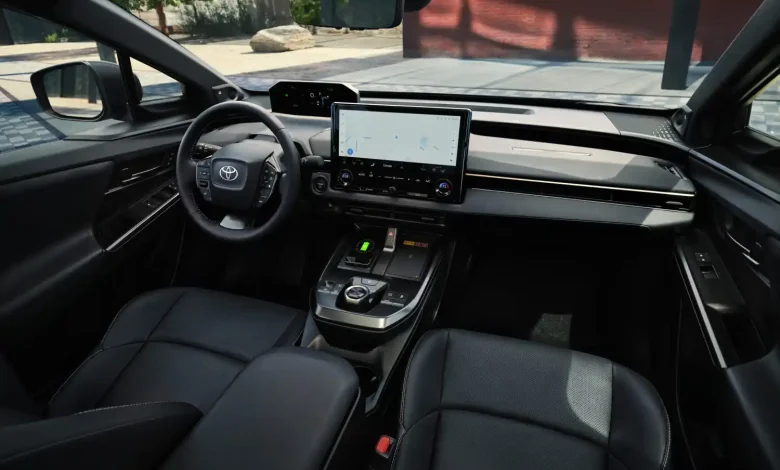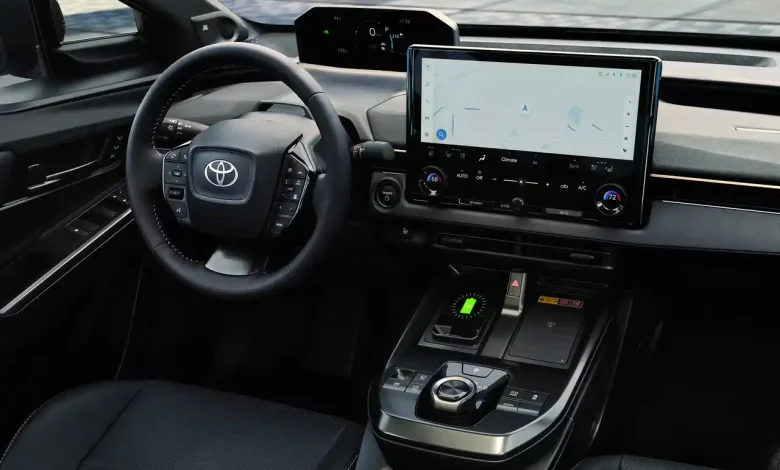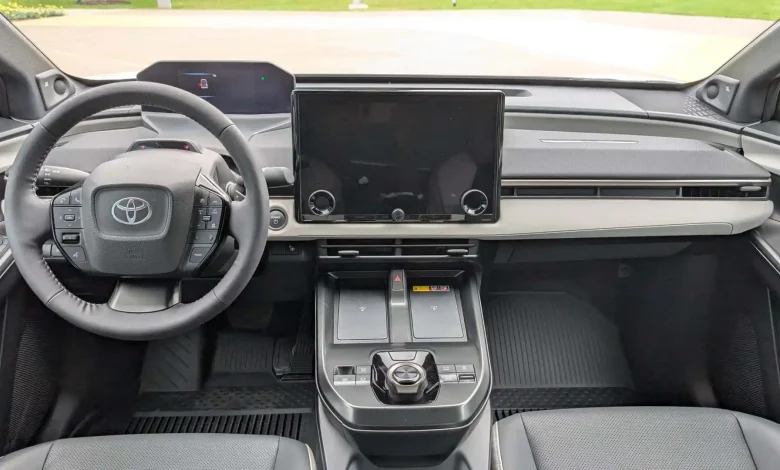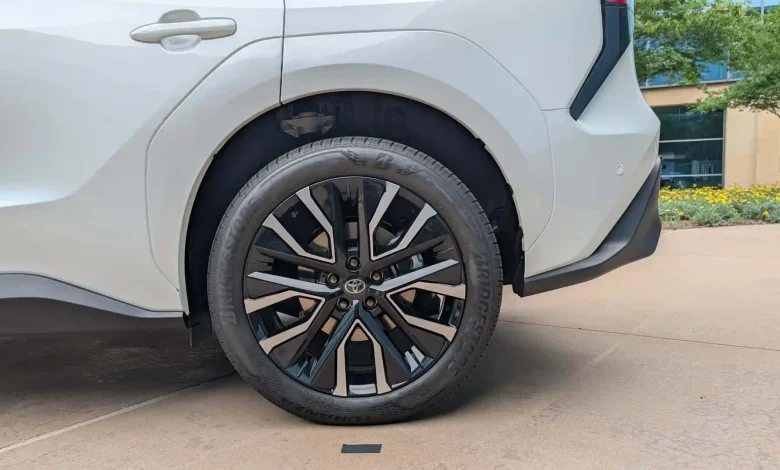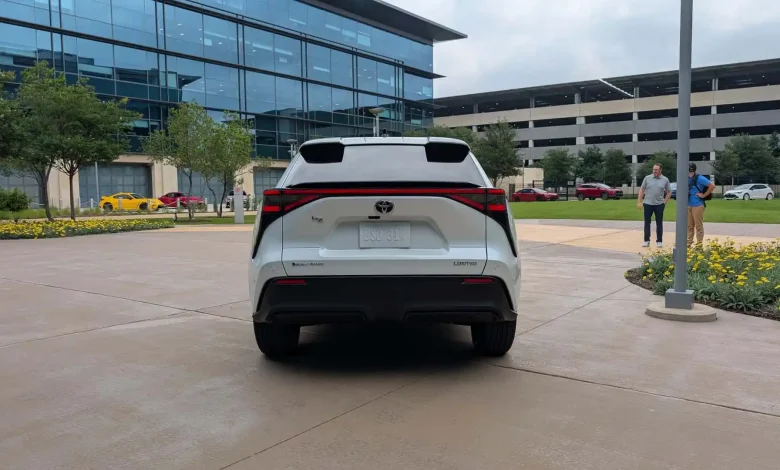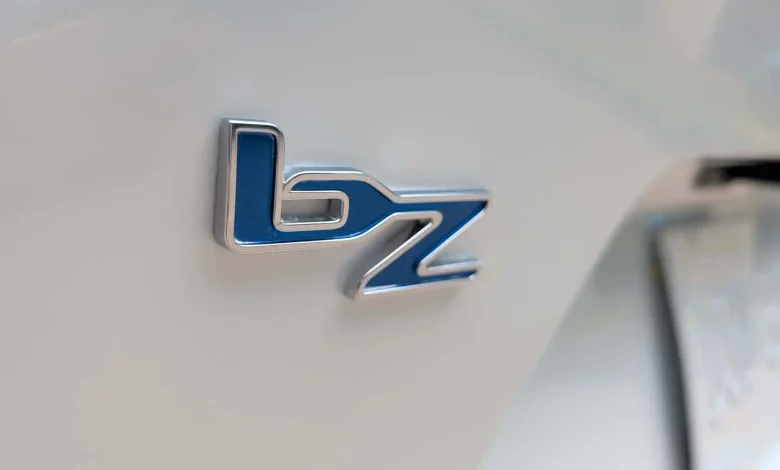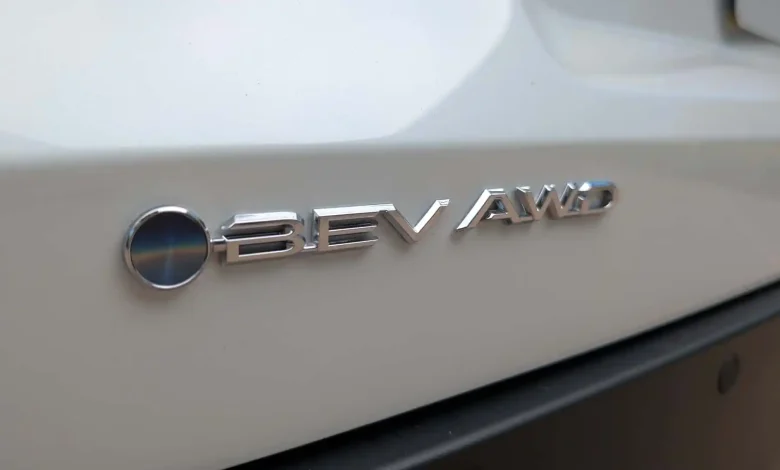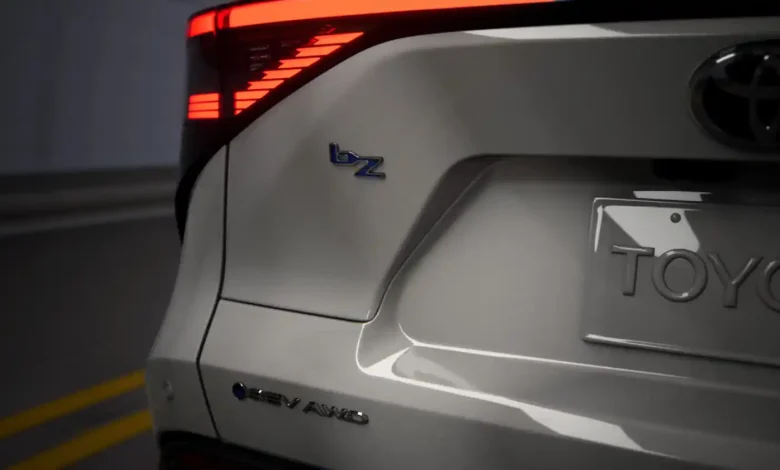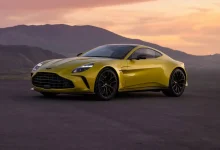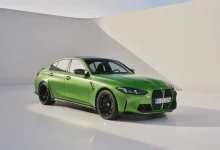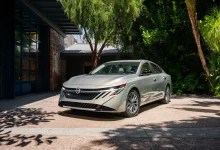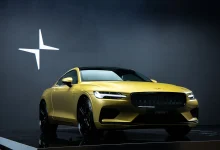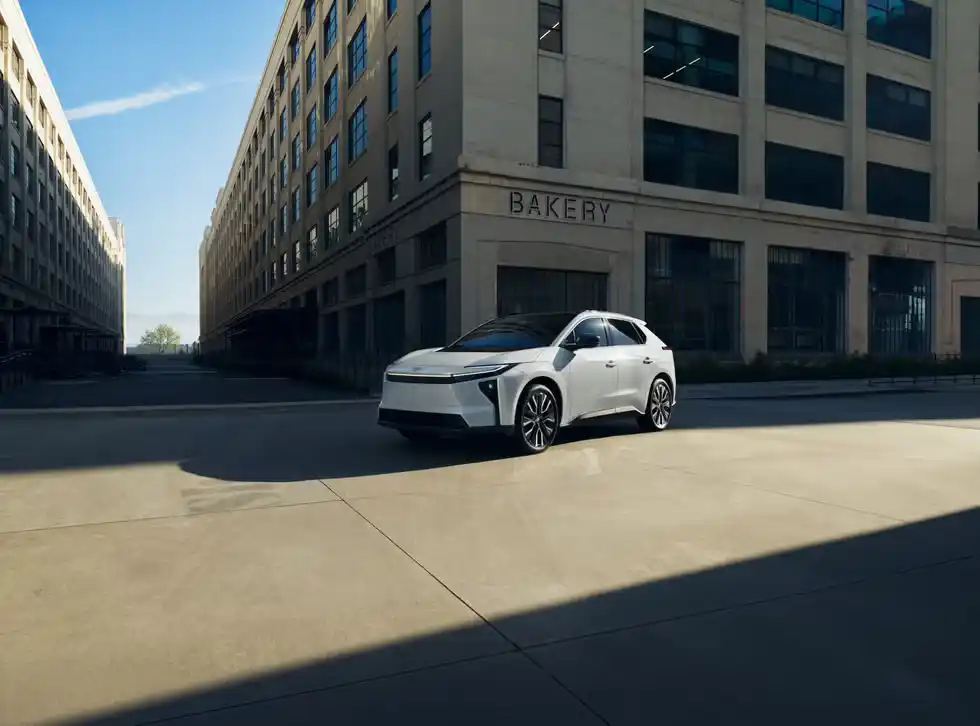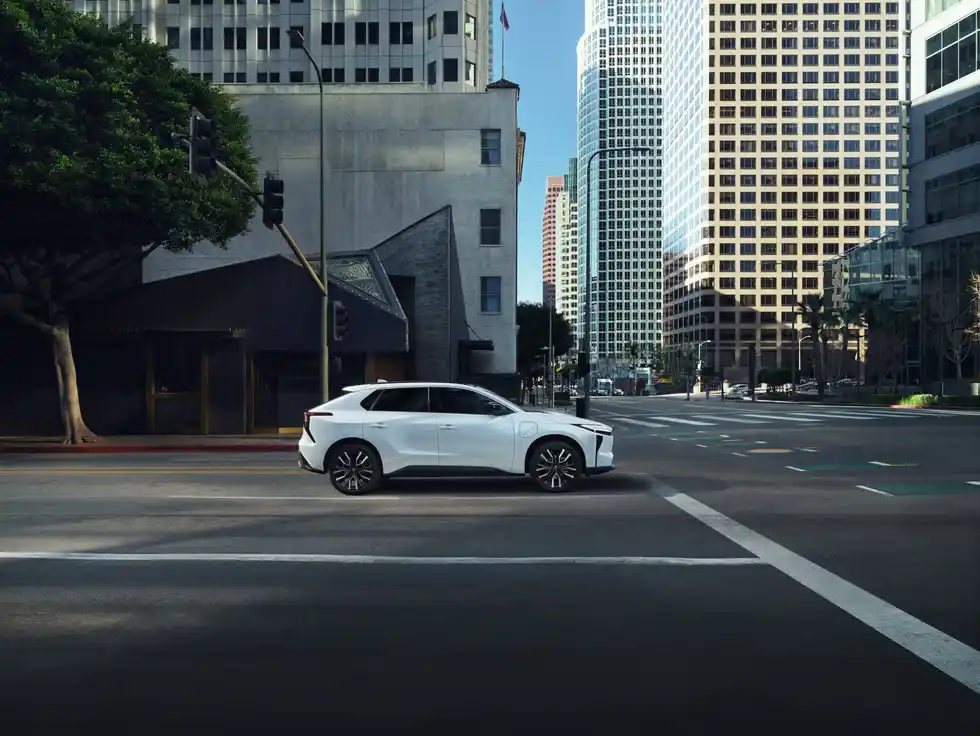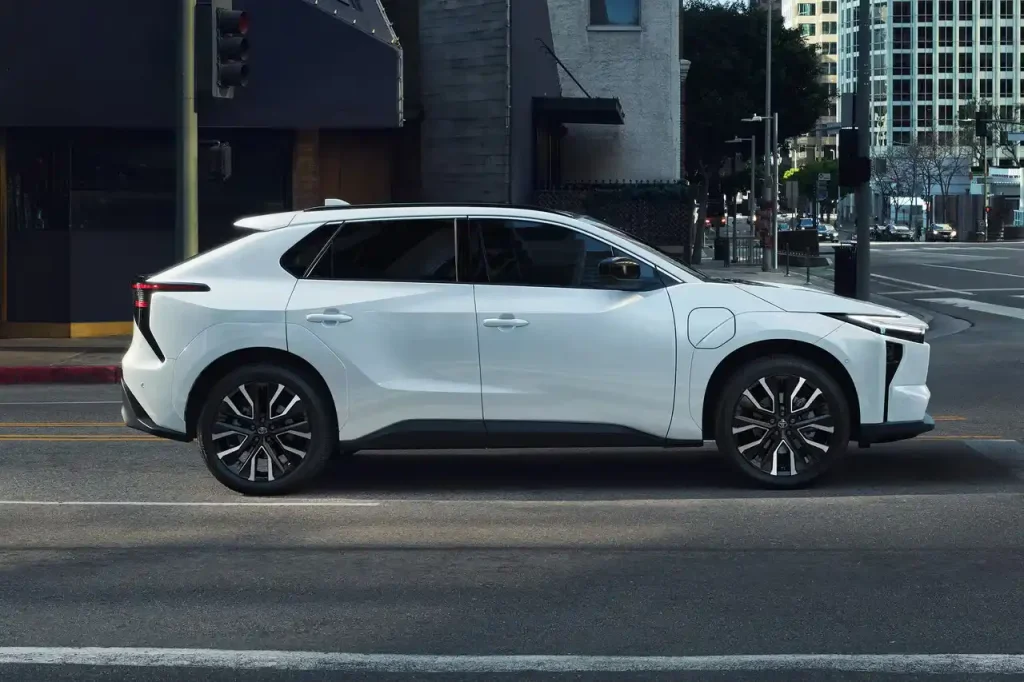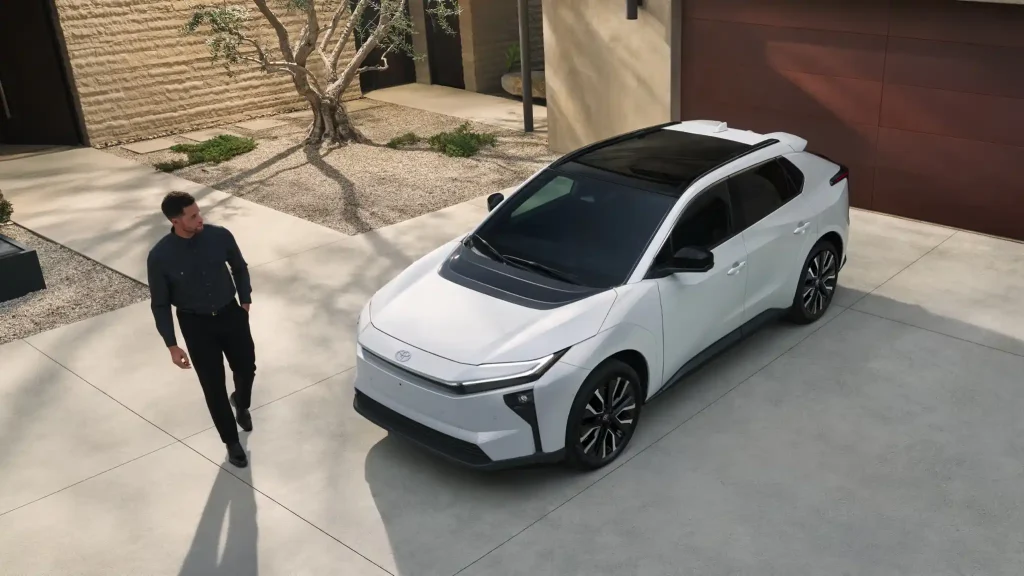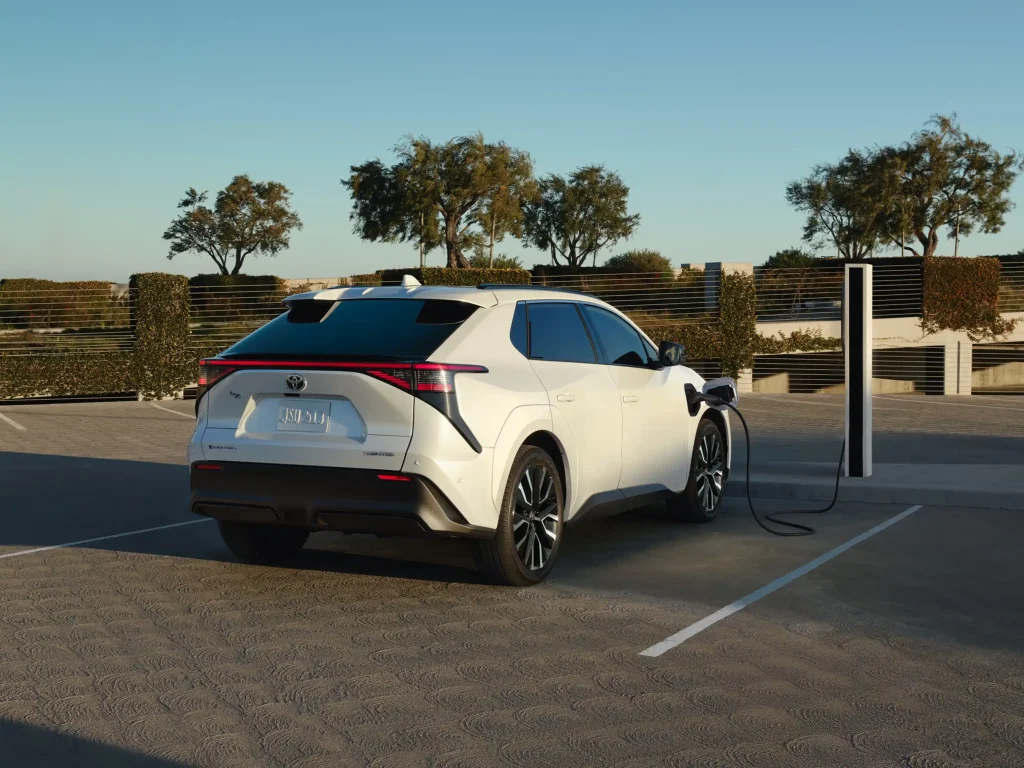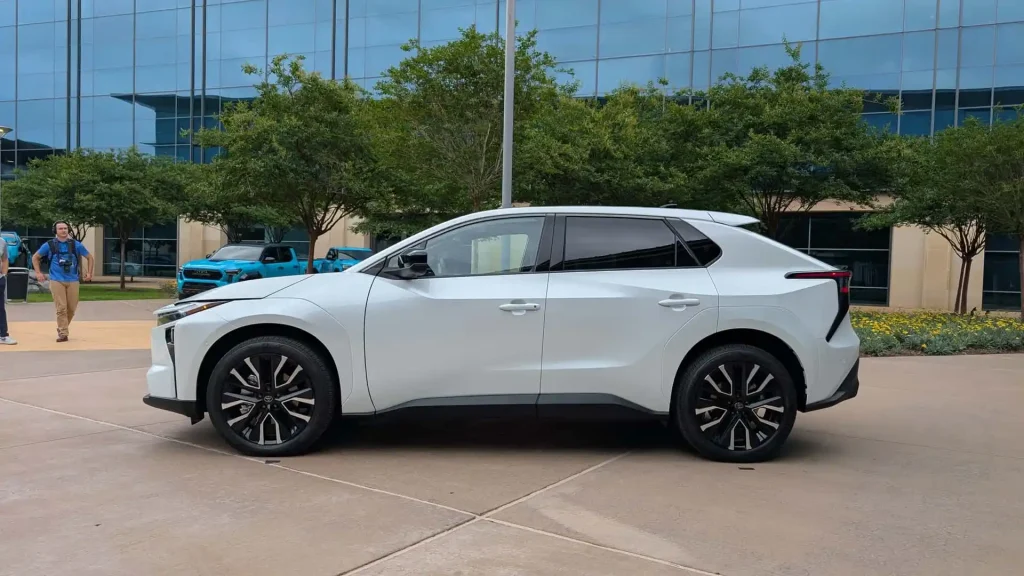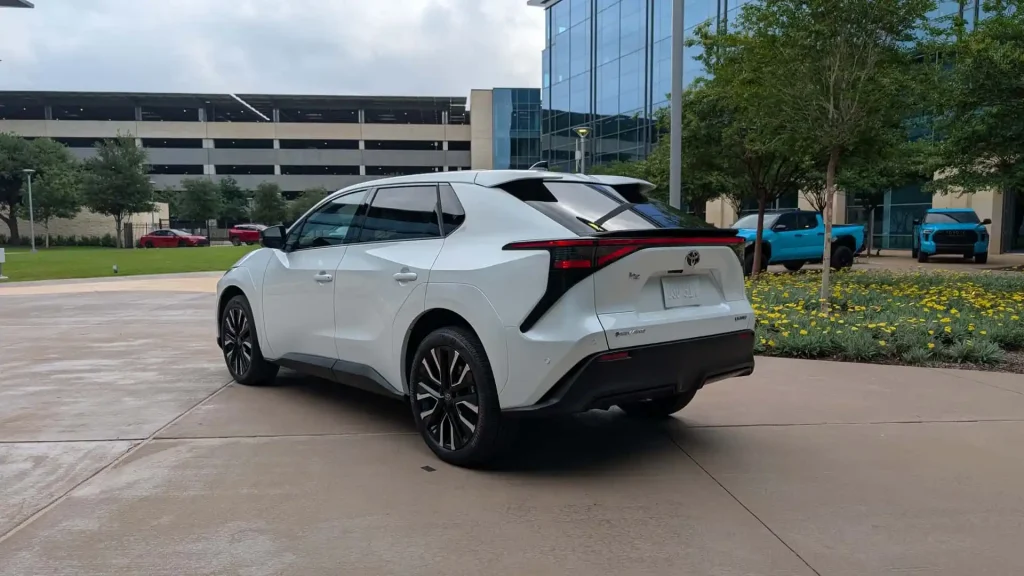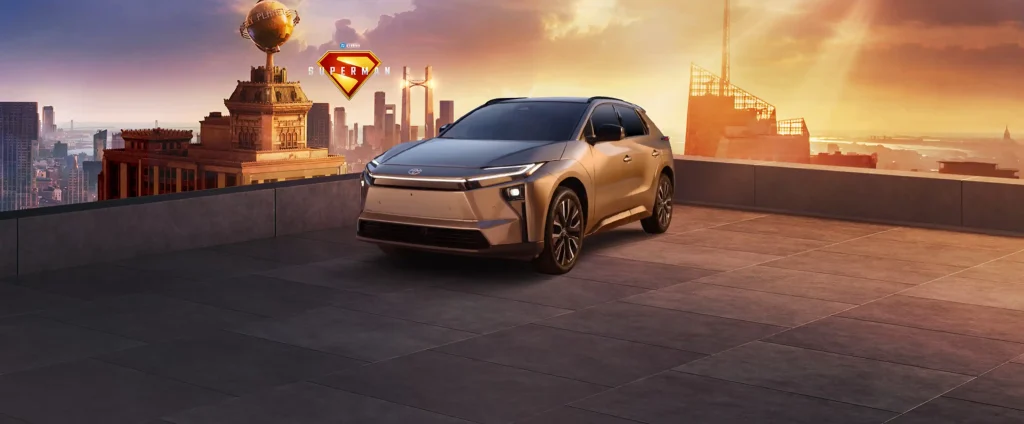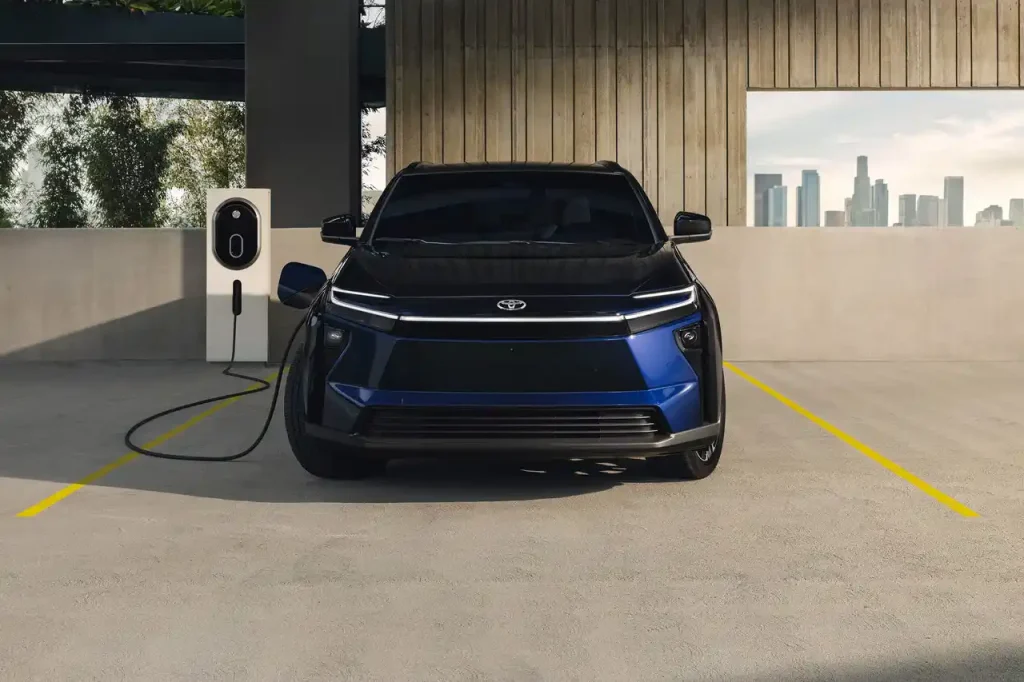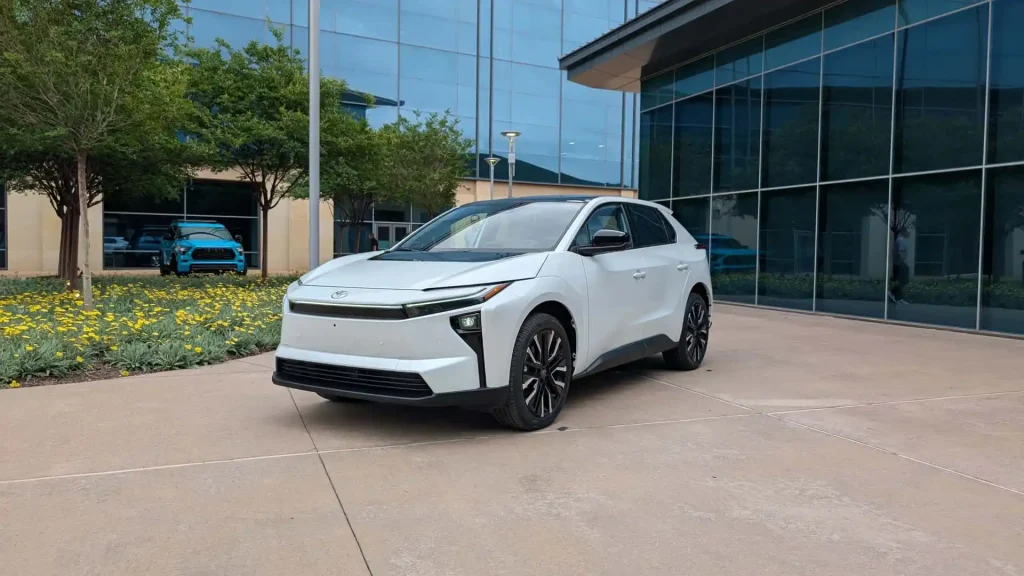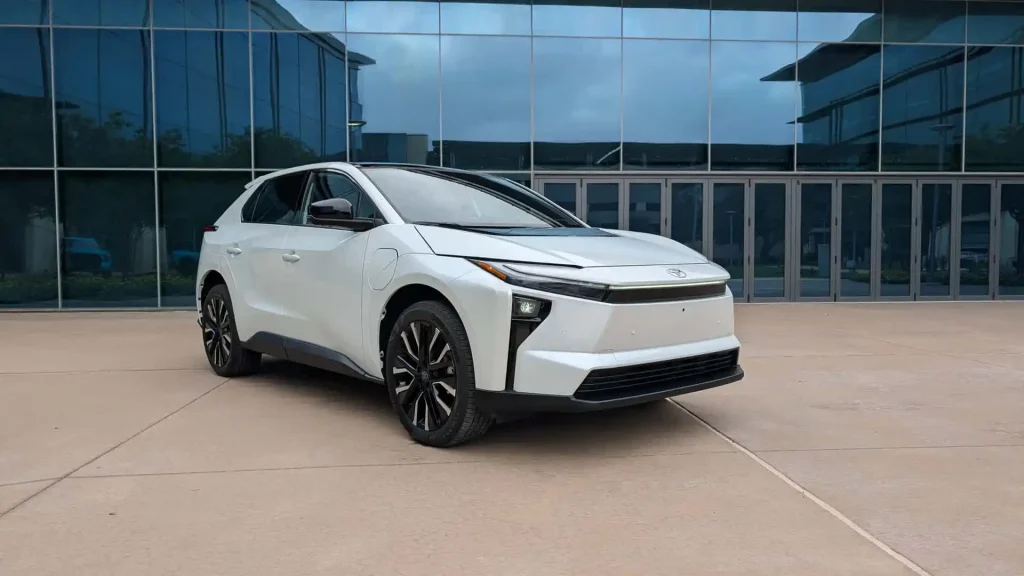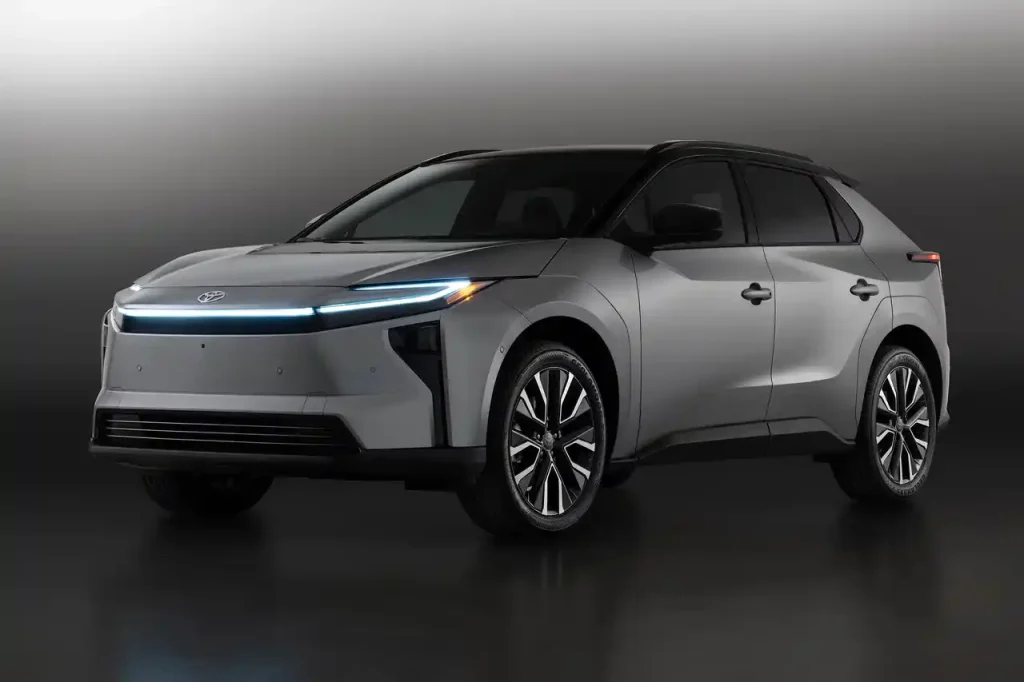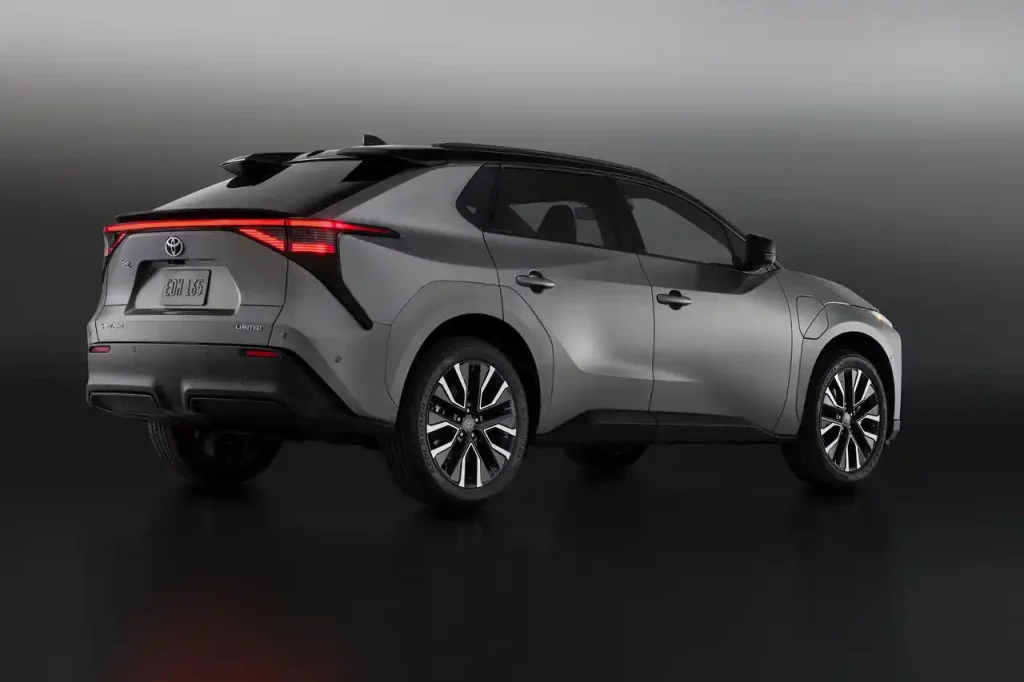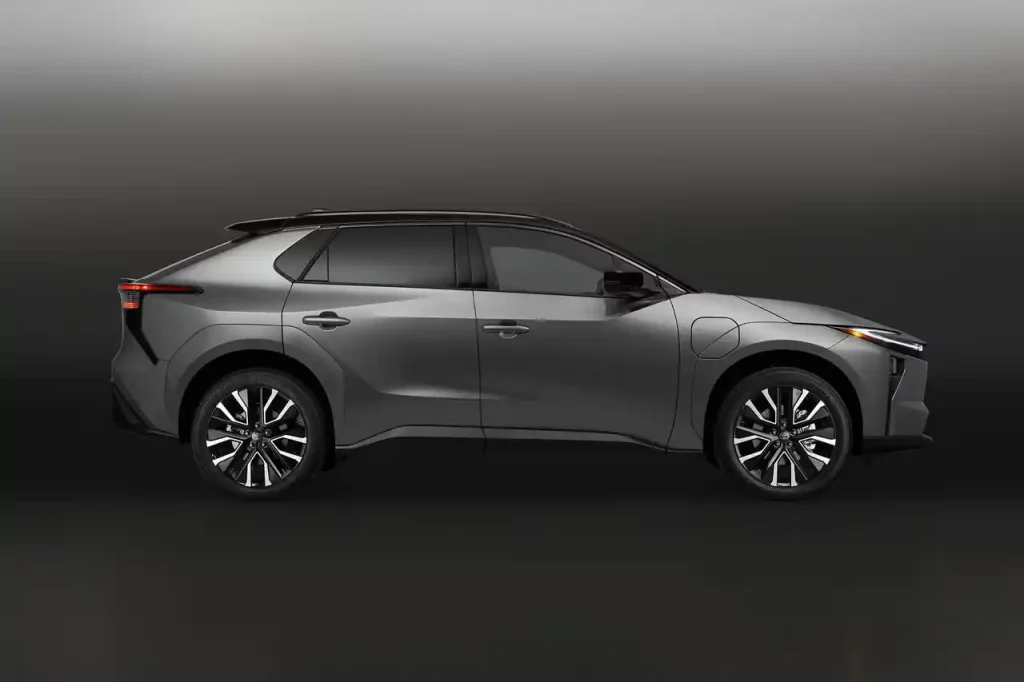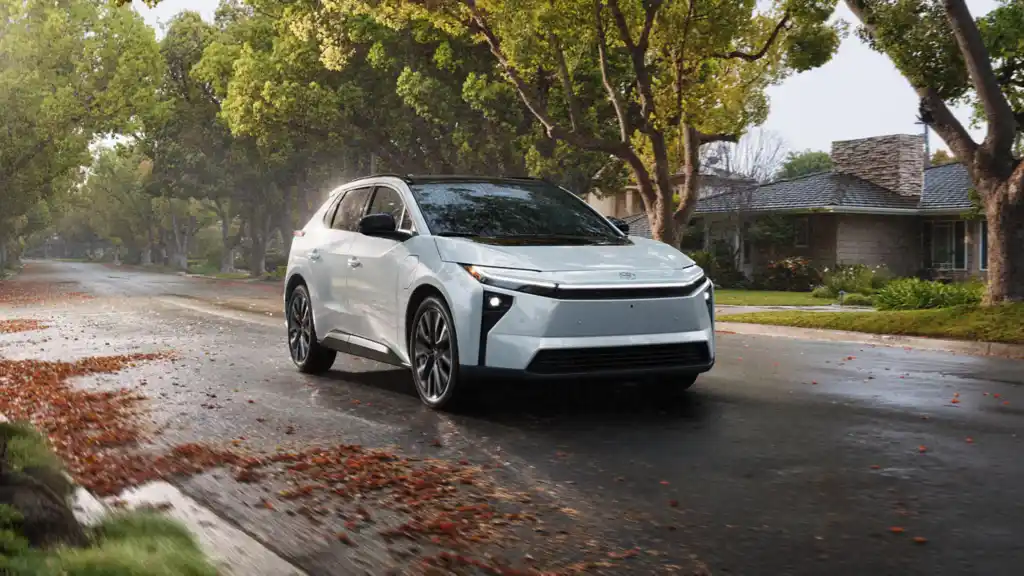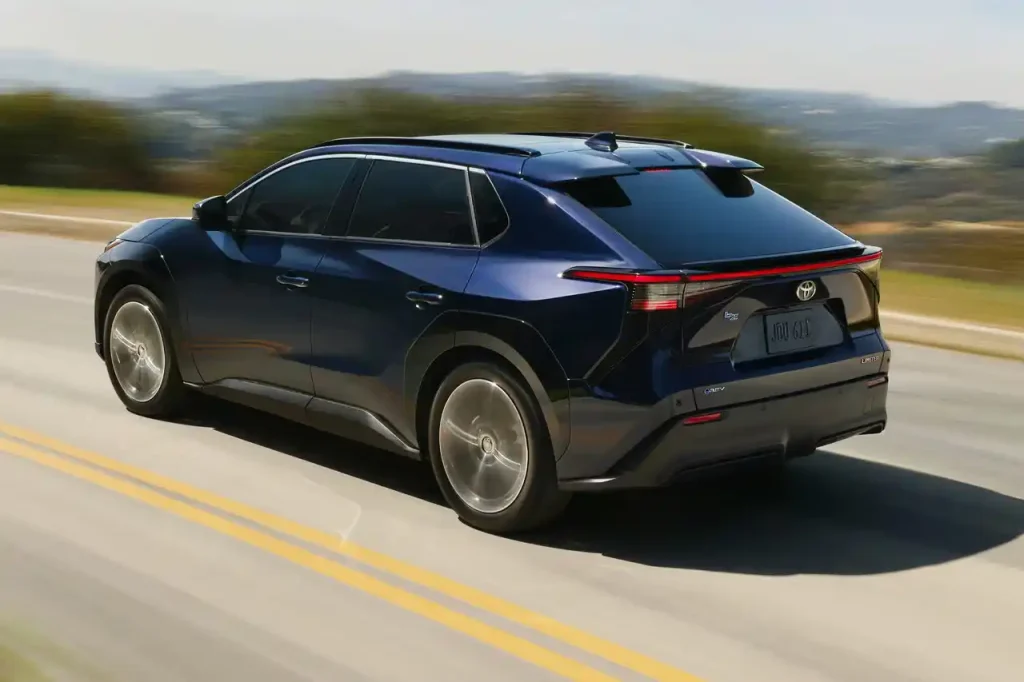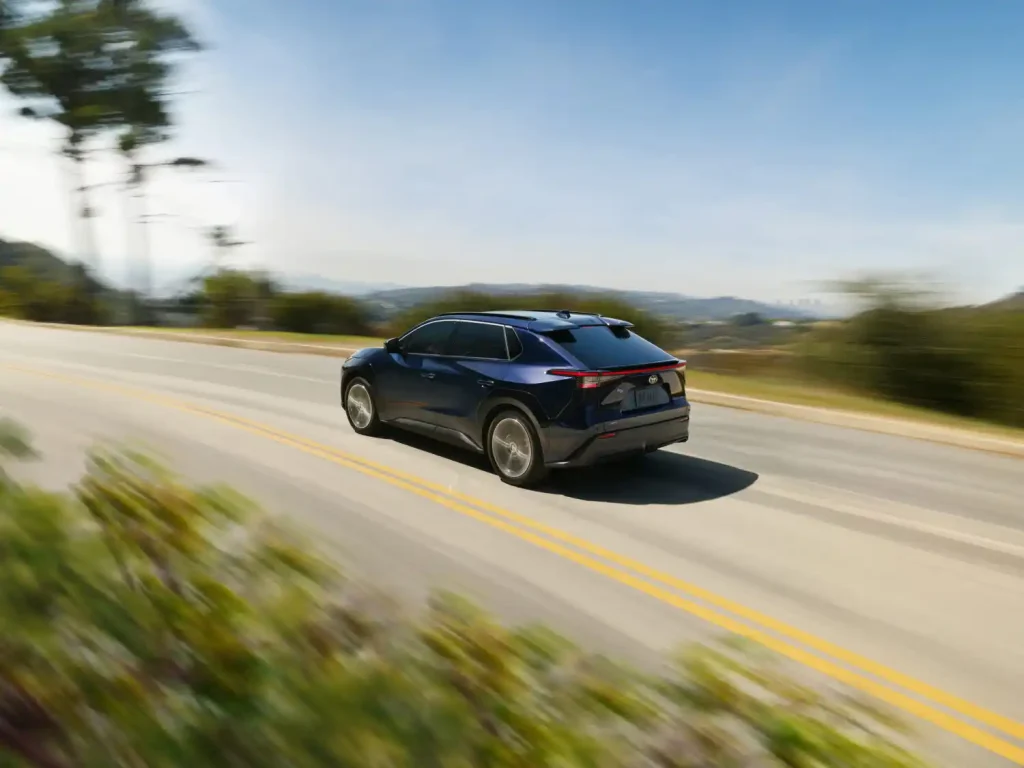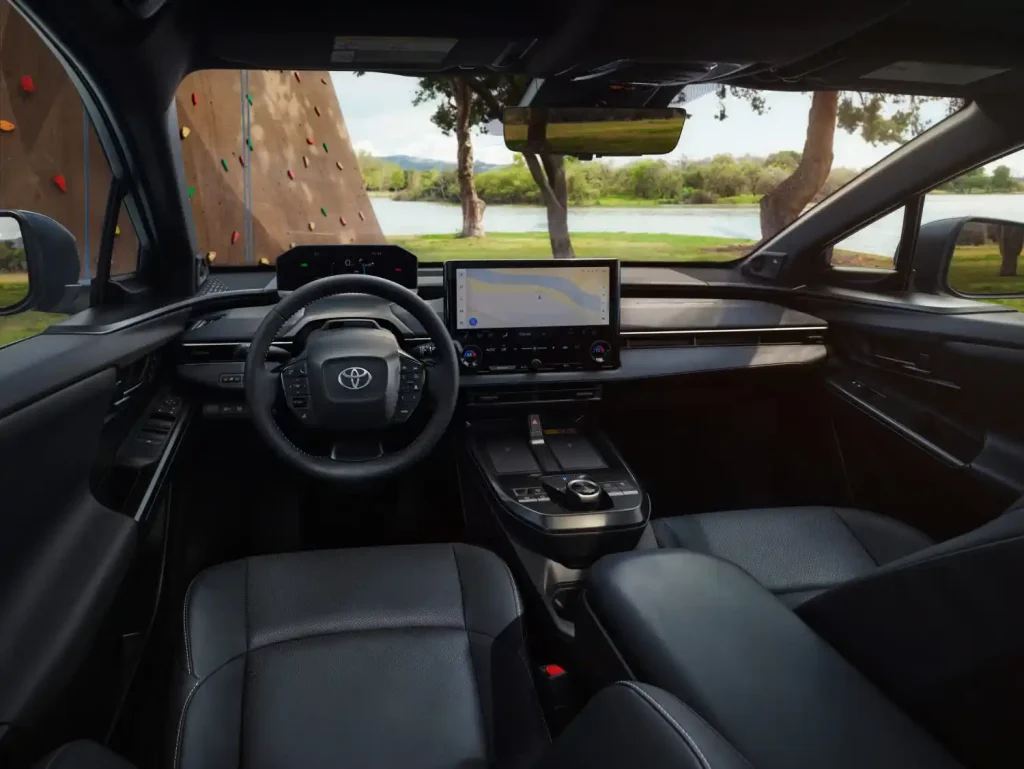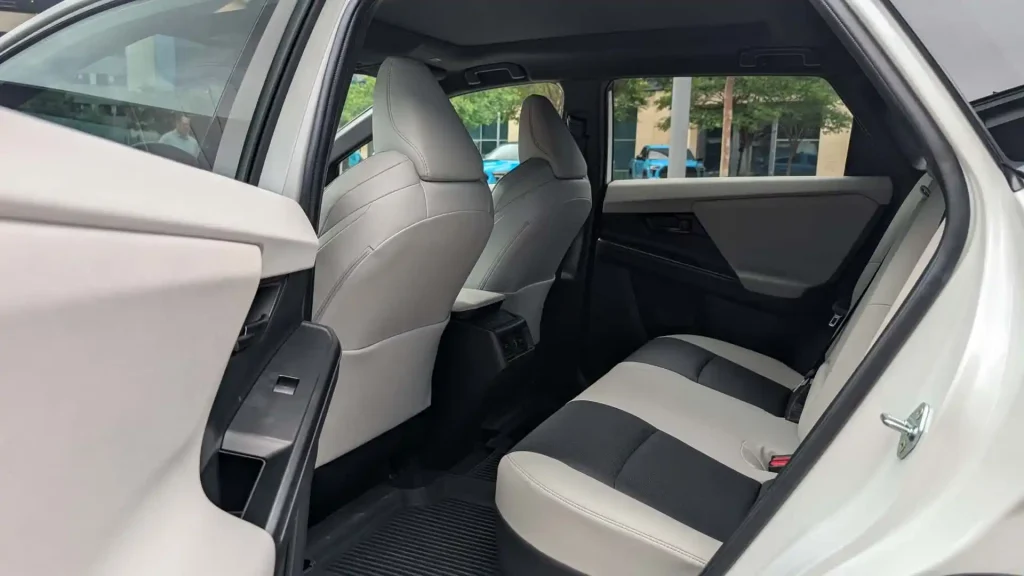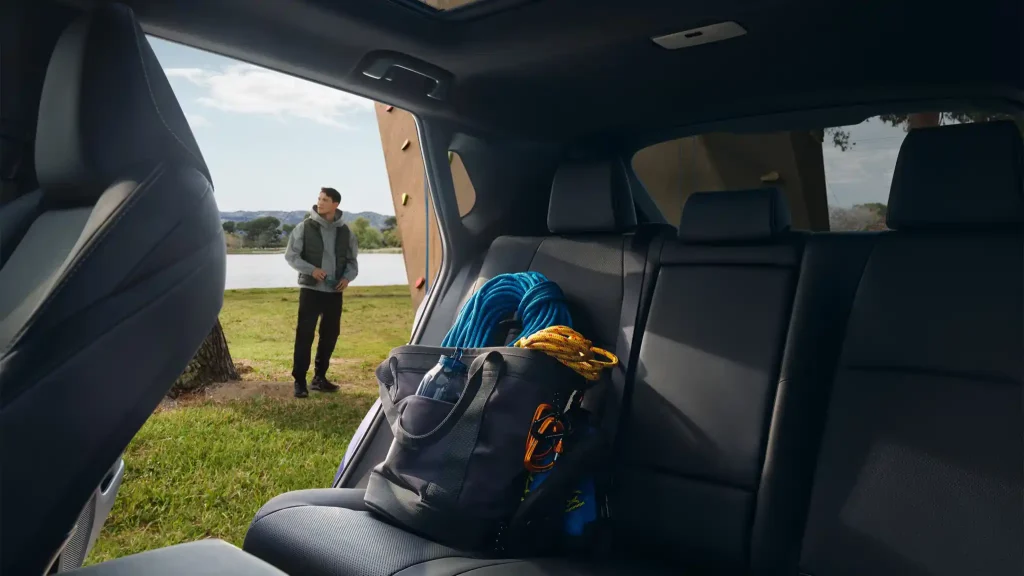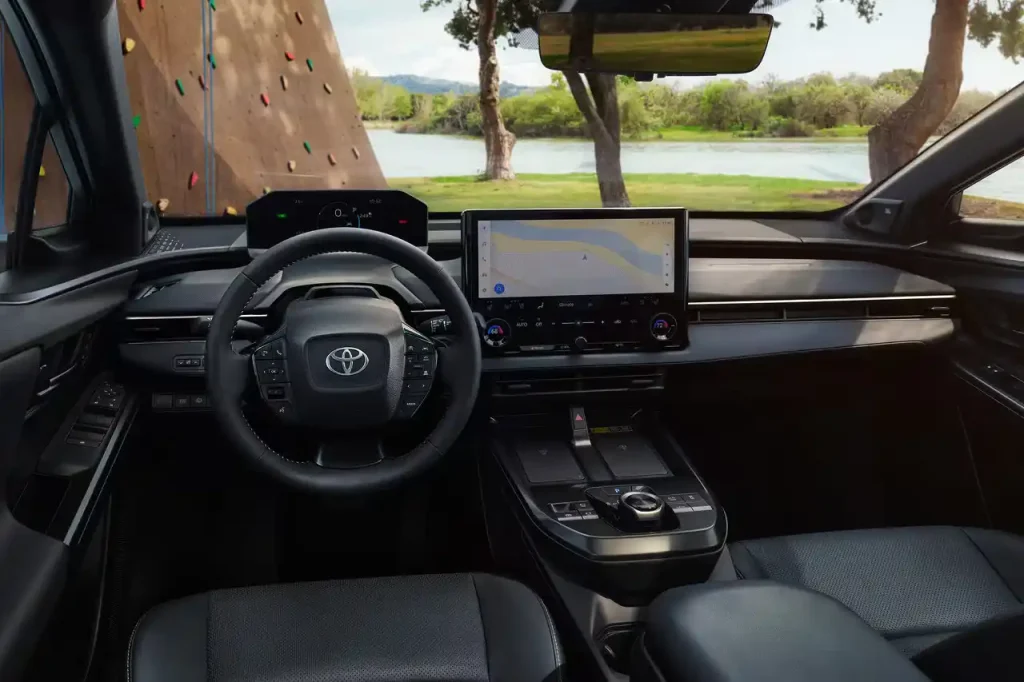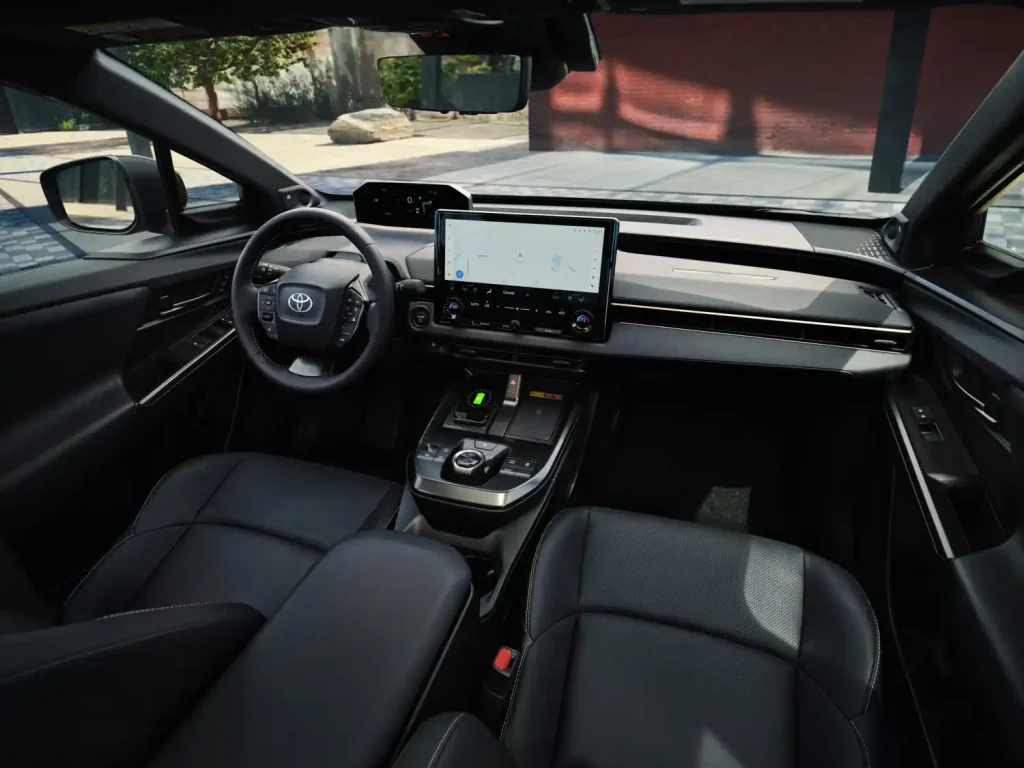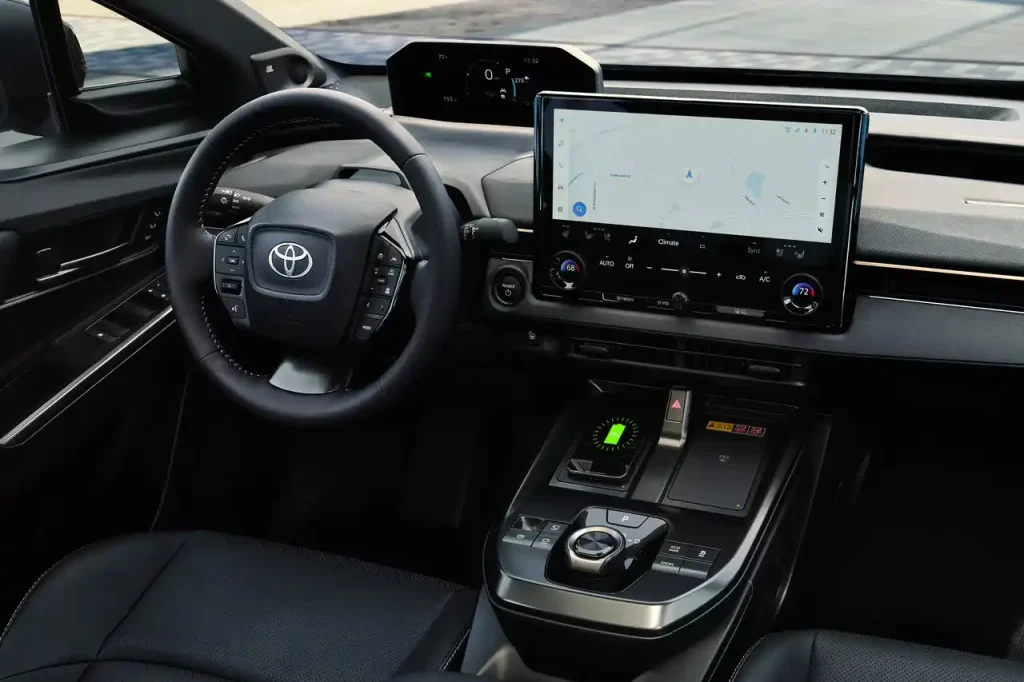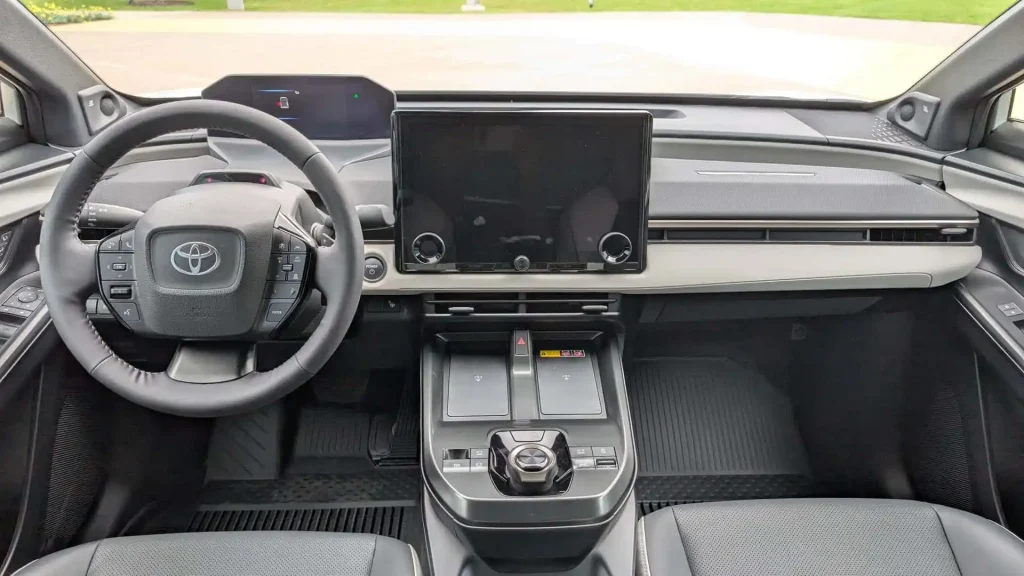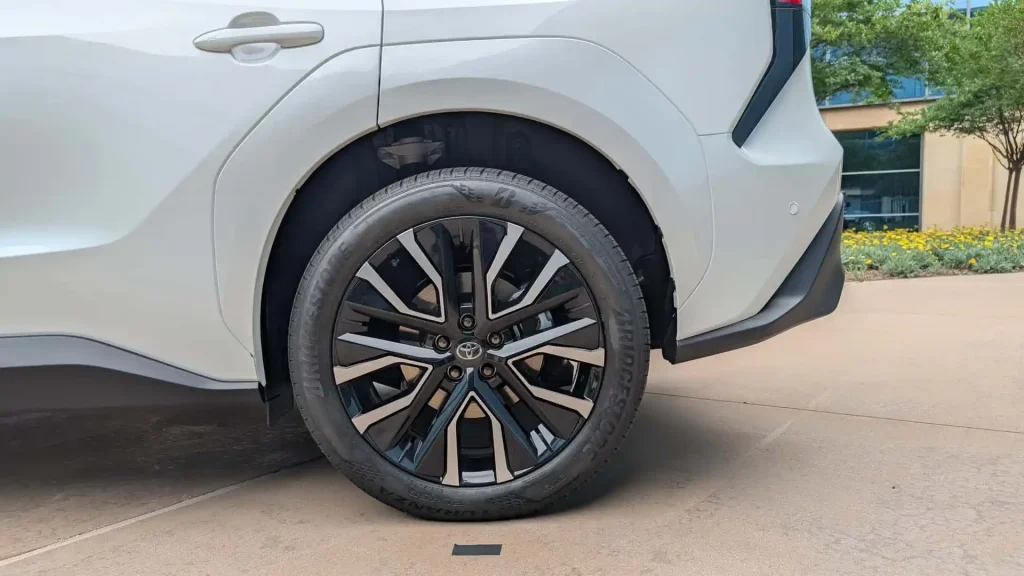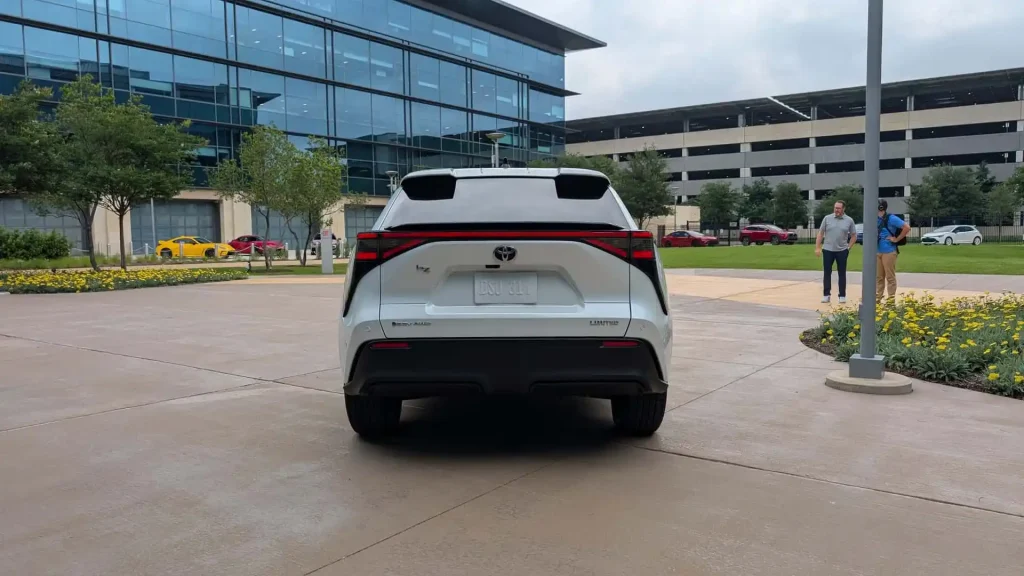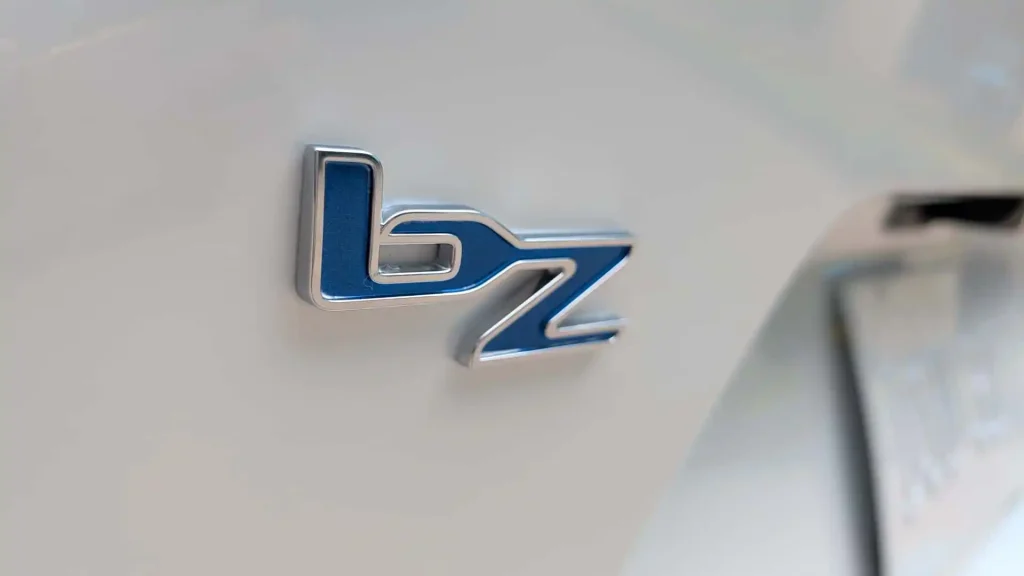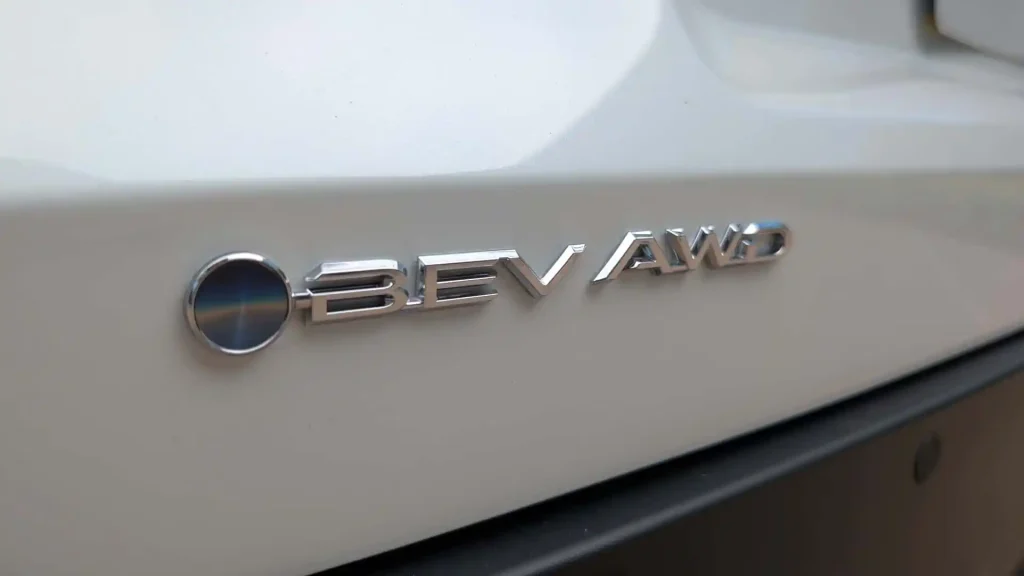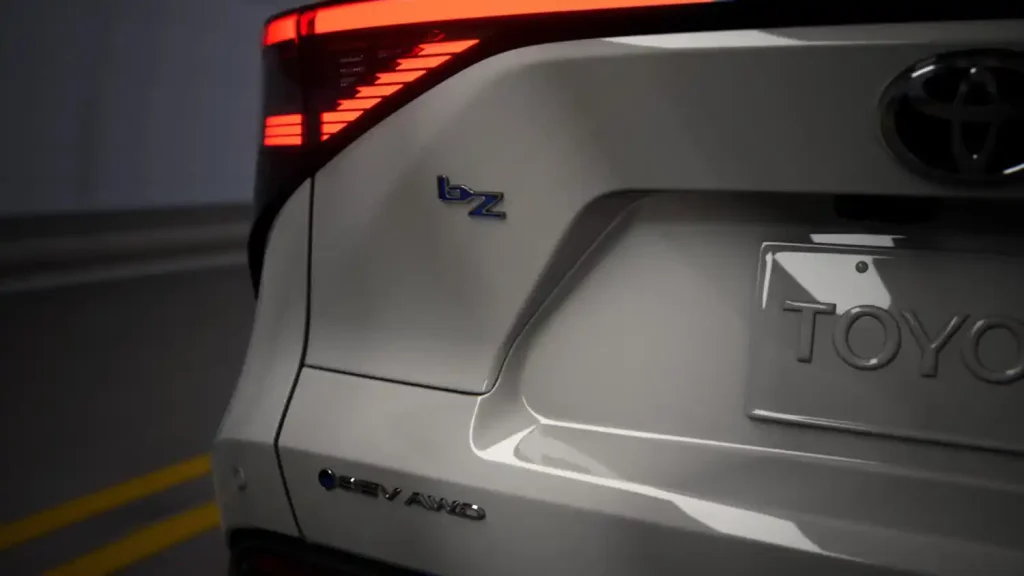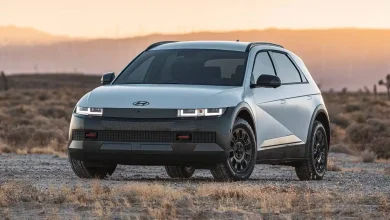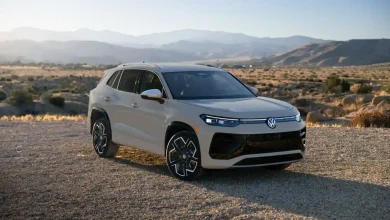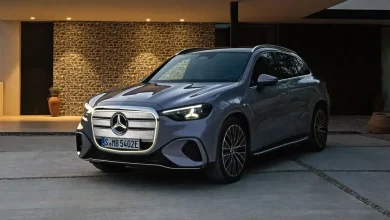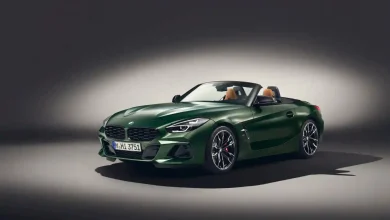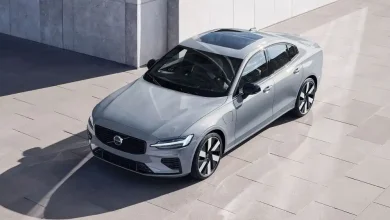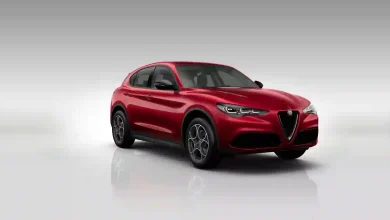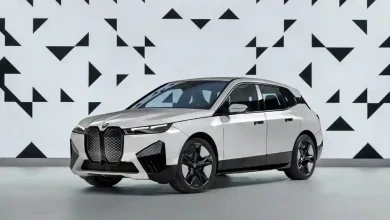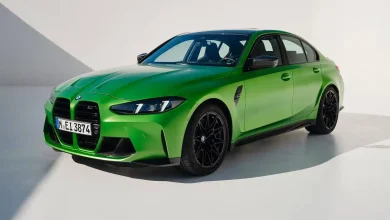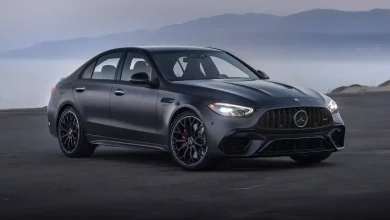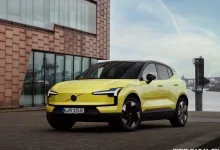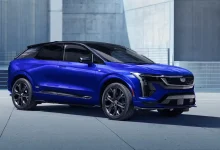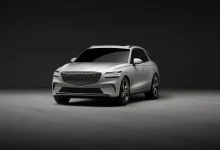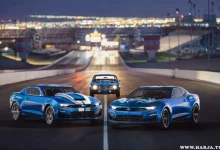- More range and power available
- New technology inside cabin
- Tesla-style NACS charging port
- Charging speed just OK
- Base model’s 236-mile range
2026 Toyota bZ – Overview
Toyota is streamlining its electric SUV lineup by simplifying the name of its compact EV—formerly known as the bZ4X—to simply “bZ“ for the 2026 model year. But the changes go far deeper than just a new badge. The 2026 Toyota bZ receives a comprehensive refresh that enhances nearly every aspect of the vehicle, from its powertrain and charging technology to its interior design and overall performance.
One of the most significant upgrades is under the hood: front-wheel-drive models now produce up to 221 horsepower, while all-wheel-drive versions boast a significant increase to 338 horsepower. These power bumps, along with a longer range for AWD variants and a refined exterior and cabin aesthetic, make the updated bZ not only easier to say but also much more compelling to drive and live with.
When Is the 2026 Toyota bZ Coming Out?
Toyota has confirmed that the 2026 bZ will arrive in North American showrooms in late fall 2025, with production beginning in Japan and some units expected to be assembled in the U.S. The bZ lineup will include both standard-range and long-range models, depending on the market and trim level.
Pre-orders are expected to open in August 2025, with pricing, range certifications, and full specifications available by then.
What’s New for 2026 Toyota bZ?
The 2026 Toyota bZ arrives with a host of meaningful upgrades that go well beyond cosmetic tweaks. One of the most significant improvements is a substantial power increase for all-wheel-drive models, which now generate 338 horsepower, a sizable leap from the previous 215 hp. This added muscle is paired with improved efficiency—Toyota claims a 25 percent boost in driving range, with AWD variants now offering an estimated 314 miles on a full charge.
Another major change is the adoption of the North American Charging Standard (NACS) port, replacing the older CCS setup. This shift allows the bZ to access Tesla’s Supercharger network, significantly expanding fast-charging options for owners.
Battery updates vary by configuration. The front-wheel-drive XLE model gets a slightly smaller 57.7-kWh battery (down from 63.4 kWh), likely optimized for weight and efficiency. All other trims benefit from a larger 74.7-kWh battery pack, helping support the increased power and range.
Charging technology has also improved. On a DC fast charger, the bZ can now replenish its battery from 10 to 80 percent in about 30 minutes. A new 11-kW on-board charger boosts AC charging speeds, and a battery preconditioning system ensures optimal temperatures before plugging in, improving both charging time and efficiency.
Visually, the 2026 bZ receives a subtly refreshed front fascia and an updated dashboard layout that enhances usability and aesthetics.
Pricing and Which One to Buy
Although Toyota has not officially announced pricing for the 2026 bZ lineup, industry expectations place the starting price at approximately $42,000, with top-tier trims potentially reaching up to $46,000, depending on options and configurations. These figures suggest a slight increase compared to the outgoing model, justified by enhancements in performance, battery range, and technology.
| Trim | Starting MSRP (est.) |
|---|---|
| XLE |
$42,000 (est)
|
|
Limited
|
$46,000 (est)
|
Without finalized pricing details for each trim level, it’s too early to make a definitive value-based recommendation. However, the all-wheel-drive XLE trim is expected to offer the best balance of performance, range, and features, making it a likely sweet spot for most buyers.
Standard equipment on the AWD XLE trim is expected to include:
-
18-inch alloy wheels
-
Heated front seats
-
8-way power-adjustable driver’s seat
-
60/40 split-folding rear seats
-
Front and rear ambient interior lighting
-
Toyota Safety Sense 4.0 driver-assistance suite
-
Wireless smartphone connectivity
For those seeking a well-equipped electric SUV with improved driving dynamics and longer range, the XLE AWD configuration is shaping up to be a smart and practical choice in the 2026 bZ lineup.
EV Motor, Power, and Performance
The 2026 Toyota bZ benefits from a thorough update to its electric powertrain, featuring upgraded motors that deliver increased power across several trims. The front-wheel-drive XLE base model is equipped with a 168-horsepower electric motor, while the front-wheel-drive XLE Plus and Limited trims now produce a stronger 221 horsepower from a single motor. Meanwhile, the all-wheel-drive versions employ two electric motors—one at the front and one at the rear—generating a combined 338 horsepower.
This significant boost in power positions the bZ alongside competitors like the Hyundai Ioniq 5 and Volkswagen ID.4 in terms of performance. During our test drives, the all-wheel-drive variant’s enhanced output made a noticeable difference, delivering a more responsive and spirited driving experience. While the base front-wheel-drive model is less brisk, it still benefits from refined ride quality and improved handling compared to the previous bZ4X.
Overall, the refreshed powertrain lineup offers more engaging driving dynamics without sacrificing the smooth, quiet nature expected of a modern electric SUV.
0–60-MPH Times
Preliminary estimates suggest that the all-wheel-drive versions of the 2026 Toyota bZ can accelerate from 0 to 60 mph in approximately 4.8 seconds, delivering strong and confident performance for an electric SUV in this segment. The front-wheel-drive models, by comparison, are expected to be more modest in acceleration, taking over 7 seconds to hit 60 mph.
We will update this section with verified test results once we have the opportunity to evaluate the bZ’s acceleration firsthand.
Range, Charging, and Battery Life
The 2026 Toyota bZ adopts the North American Charging Standard (NACS) port, replacing the previous model’s CCS port. This change allows the bZ to access Tesla’s Supercharger network, greatly expanding convenient fast-charging options for owners.
Battery configurations vary across trims. The front-wheel-drive XLE model now features a slightly smaller 57.7-kWh battery pack, down from 63.4 kWh, which results in an estimated range of 236 miles according to Toyota.
Other trims are equipped with a larger, upgraded 74.7-kWh battery pack, delivering improved driving range across the lineup:
-
AWD Limited: 278 miles
-
AWD XLE: 288 miles
-
FWD Limited: 299 miles
-
FWD XLE: 314 miles
Charging performance is also enhanced. The bZ can recharge from 10 to 80 percent in about 30 minutes using a DC fast charger. Additionally, an upgraded 11-kW on-board AC charger improves the speed of Level 2 charging, making daily charging more efficient.
Fuel Economy and Real-World MPGe
While the EPA has not yet released official fuel economy ratings for the 2026 Toyota bZ, estimates suggest it will deliver MPGe figures similar to the previous model. Depending on the configuration, the bZ is expected to achieve a combined MPGe ranging from 93 to 115.
Once we have the opportunity to test the bZ, we will put it through our standard 75-mph real-world highway fuel economy test to provide accurate efficiency data.
For clarity, MPGe (miles per gallon equivalent) is an EPA metric designed to estimate the fuel efficiency of plug-in hybrid and electric vehicles by comparing their energy consumption to the energy contained in a gallon of gasoline.
Interior, Comfort, and Cargo
The 2026 Toyota bZ offers a spacious and airy cabin designed to enhance comfort and usability. A key highlight is the updated dashboard, which is more streamlined and eliminates some of the awkward sightlines and hard-to-read gauges that affected the previous model. The digital instrument cluster pairs with a large, 14.0-inch central touchscreen, delivering a modern and intuitive interface for the driver.
Between the front seats, the wide center console includes two wireless smartphone charging pads and convenient open storage underneath, though notably, the vehicle lacks a traditional glovebox—a design choice that might take some getting used to.
The earlier bZ model featured an optional radiant heating element in the lower dashboard to warm front-seat passengers’ legs, but it remains unclear if this comfort feature will return for 2026.
Cargo space remains largely unchanged. Unlike some EVs, the bZ does not offer a front trunk (frunk). The rear cargo area provides a maximum of 26 to 28 cubic feet of storage, depending on the trim, which is modest compared to competitors like the Toyota RAV4, which offers about 38 cubic feet.
Infotainment and Connectivity
The 2026 Toyota bZ features a 14.0-inch infotainment touchscreen that combines both touch and physical controls for ease of use while driving. Standard across all trims are wireless Apple CarPlay and Android Auto, ensuring seamless smartphone integration without the clutter of cables.
Audio is delivered through a standard six-speaker sound system, with an optional upgrade to a more immersive nine-speaker setup for audiophiles seeking enhanced sound quality. Additionally, the cabin includes two wireless smartphone charging pads conveniently located beneath the central display, allowing passengers to keep their devices powered without fuss.
Safety and Driver-Assistance Features
The 2026 Toyota bZ comes equipped with a robust suite of standard driver-assistance technologies designed to enhance safety and confidence on the road. At the Limited trim level, additional features become available, such as lane-change assist and an advanced Traffic Jam Assist system that enables hands-free driving in specific low-speed conditions.
Key safety features included across the lineup are:
-
Automated emergency braking with pedestrian detection
-
Lane departure warning paired with lane-keeping assist
-
Adaptive cruise control with full-speed range
For detailed information on crash-test performance, refer to the National Highway Traffic Safety Administration (NHTSA) and the Insurance Institute for Highway Safety (IIHS) websites, which provide the latest safety ratings and evaluations for the bZ4X and related models.
Warranty and Maintenance Coverage
Toyota offers competitive warranty coverage for the 2026 bZ, matching industry standards while standing out with above-average complimentary maintenance. Its electrical component warranty aligns well with what most EV manufacturers provide, giving buyers peace of mind over the vehicle’s critical systems.
Key coverage details include:
-
Limited warranty: 3 years or 36,000 miles
-
Powertrain warranty: 5 years or 60,000 miles
-
Electrical components warranty: 8 years or 100,000 miles
-
Complimentary scheduled maintenance: 2 years or 25,000 miles
This comprehensive coverage ensures that Toyota owners benefit from solid support during the early years of ownership, particularly in maintaining the health of the bZ’s electric drivetrain and related components.
2026 Toyota bZ Specifications
| Specification | 2026 Toyota bZ (FWD) | 2026 Toyota bZ (AWD) |
|---|---|---|
| Power | 201 hp | 215 hp |
| Torque | 196 lb-ft | 250 lb-ft |
| Drivetrain | Front-Wheel Drive | All-Wheel Drive |
| Battery Capacity | 71.4 kWh | 77.4 kWh |
| Range (EPA est.) | 260 miles | 305 miles |
| MPGe (est.) | 115 MPGe | 102 MPGe |
| 0–60 mph | ~7.2 seconds | ~6.3 seconds |
| Charging Time (80%) | ~30 minutes (DC Fast) | ~35 minutes (DC Fast) |
| Seating | 5 passengers | 5 passengers |
| Cargo Volume | 27.0 cu ft | 27.0 cu ft |
| Towing Capacity | 1,500 lbs | 2,000 lbs |
Final Verdict
The 2026 Toyota bZ is a huge step forward in Toyota’s electrification journey. With meaningful range improvements, a premium interior, smoother ride quality, and a stronger tech suite, this SUV finally feels like a true rival to segment leaders.
For shoppers looking for a dependable, stylish, and comfortable EV with the Toyota reputation, the bZ is no longer just an option — it’s a compelling choice.
2026 Toyota bZ Videos
